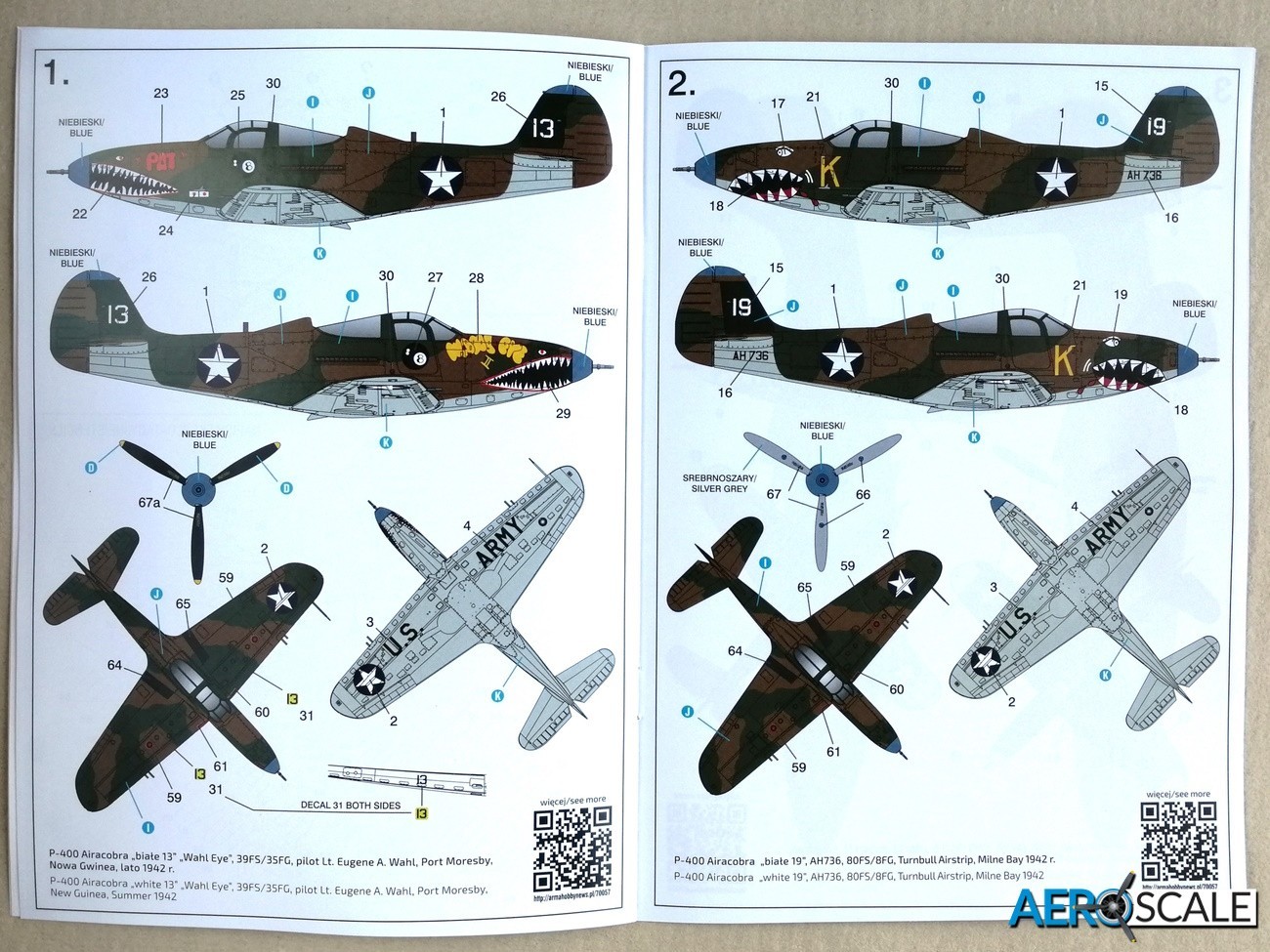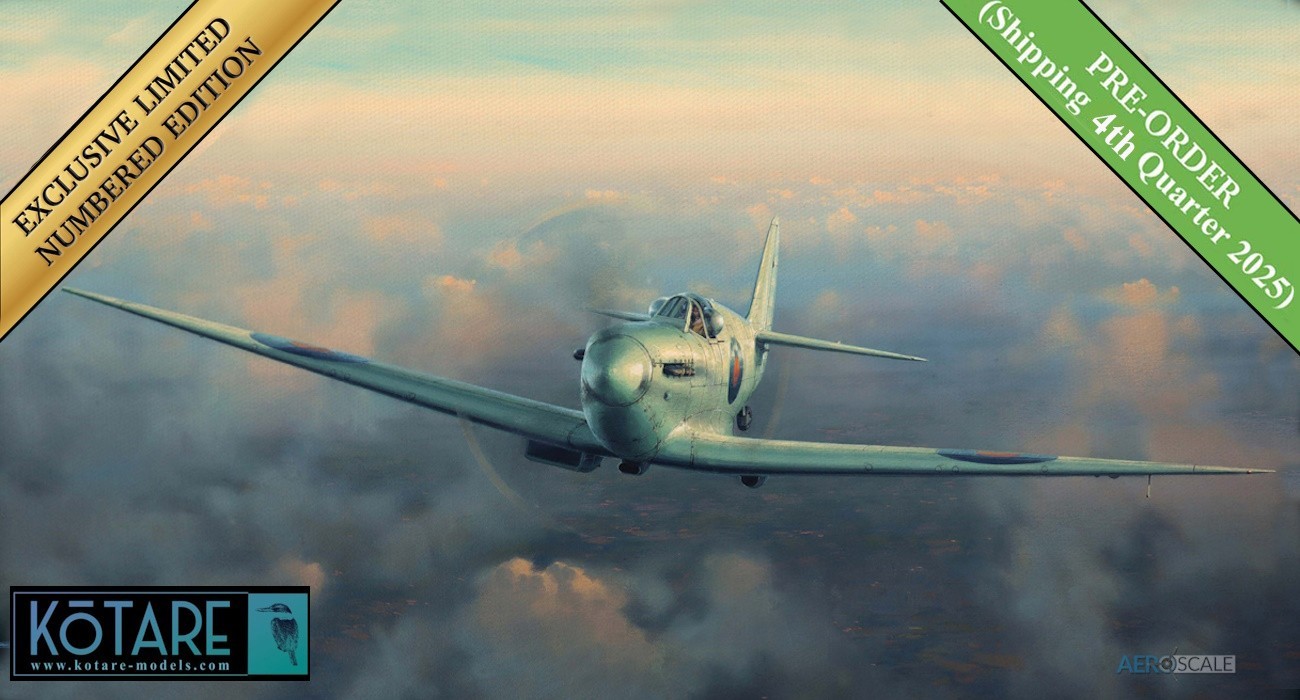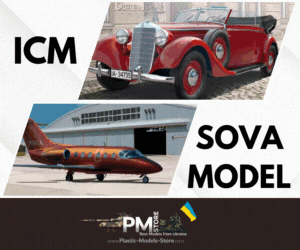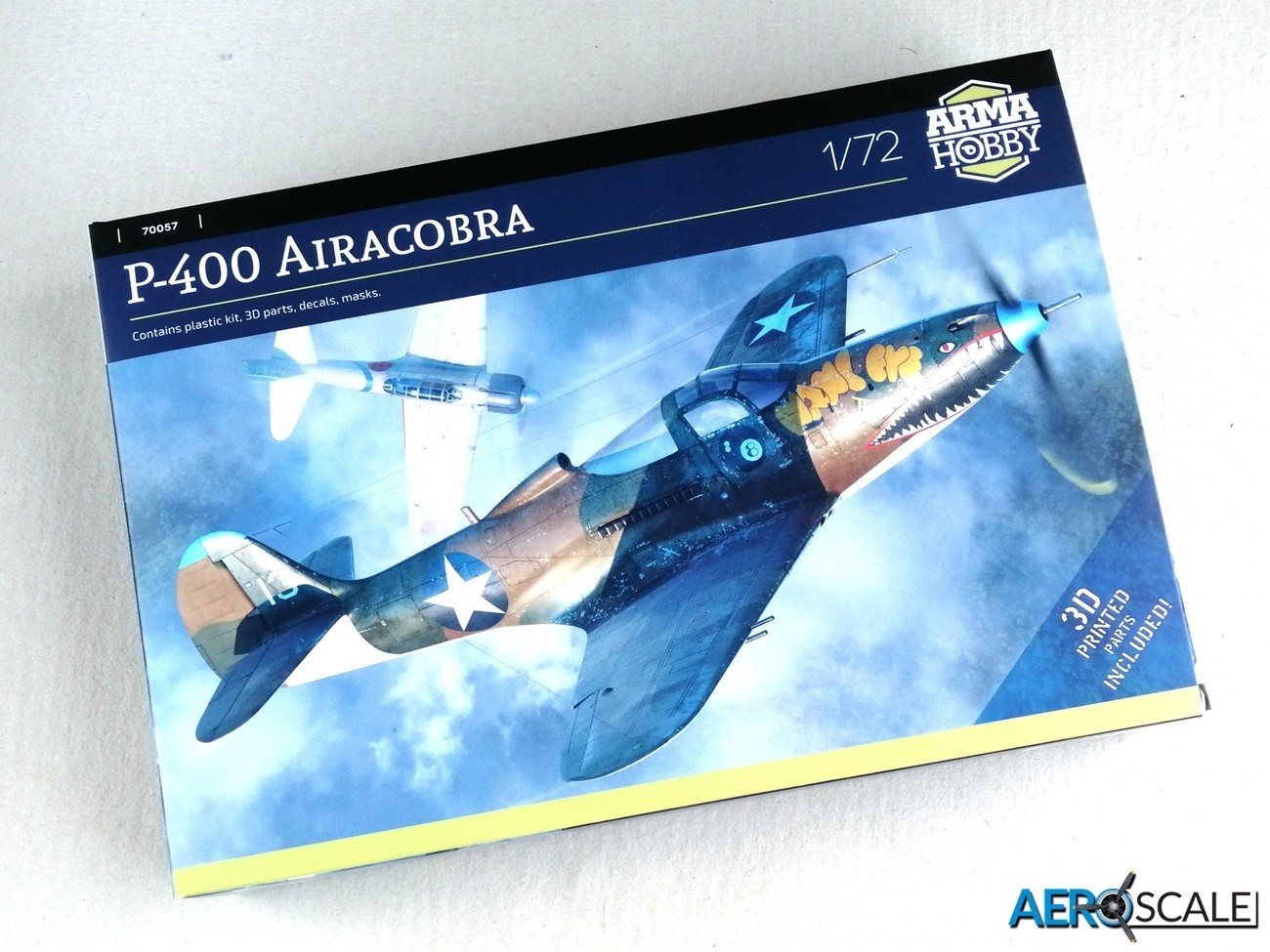
Background
The Airacobra was Bell’s answer to the US Army Air Corps [USAAC] Circular proposal X-609 for a fighter capable of intercepting high altitude hostile aircraft. Bell’s chief engineer set about designing the aircraft around the 37mm Oldsmobile T9 [later M4] canon. As the calibre of the canon was much greater than the standard 20mm canon, it was impossible to accommodate the engine in the forward fuselage. As a result, the engine was placed in the centre of the fuselage behind the pilot with the turbo charger placed in the belly. The air intake for the super charger was placed on the side of the fuselage similar to the intakes on the tail boom of the P-38. A ten-foot-long prop shaft connected the Allison V-1710 liquid-cooled V-12 engine to the propeller. The resultant XP-39 was submitted to the National Advisory Committee for Aeronautics [NACA] for tests. Unfortunately, it was found that there was high amount of drag resulting from the engine installation, oil cooler and intercooler scoops as well as the turbocharger. Changes were made from the recommendations of NACA including the deleting of the turbocharger. Its removal had a noticeable negative effect regarding high altitude performance. The glycol-cooled radiator was fitted in the wing centre section, immediately beneath the engine; it was flanked by the drum-shaped oil coolers. Air for the radiator and oil coolers was drawn in through intakes in wing leading edges and was directed via four ducts to the radiator faces. The air was then exhausted through three controllable hinged flaps in the fuselage centre section. Air for the carburettor was drawn in through a raised oval intake immediately aft of the rear canopy. Despite the change in aerodynamics the P-39 never attended speeds beyond 400mph. The lack of free space in the fuselage meant internal fuel storage was limited to the wing. As a result, range was disappointing and the P-39 generally flew on missions with external fuel tanks. Despite its limitations the P-39 saw service throughout WWII with the USAAF, Soviet AF, Free French, the RAF, and the Italian Co-Belligerent AF.

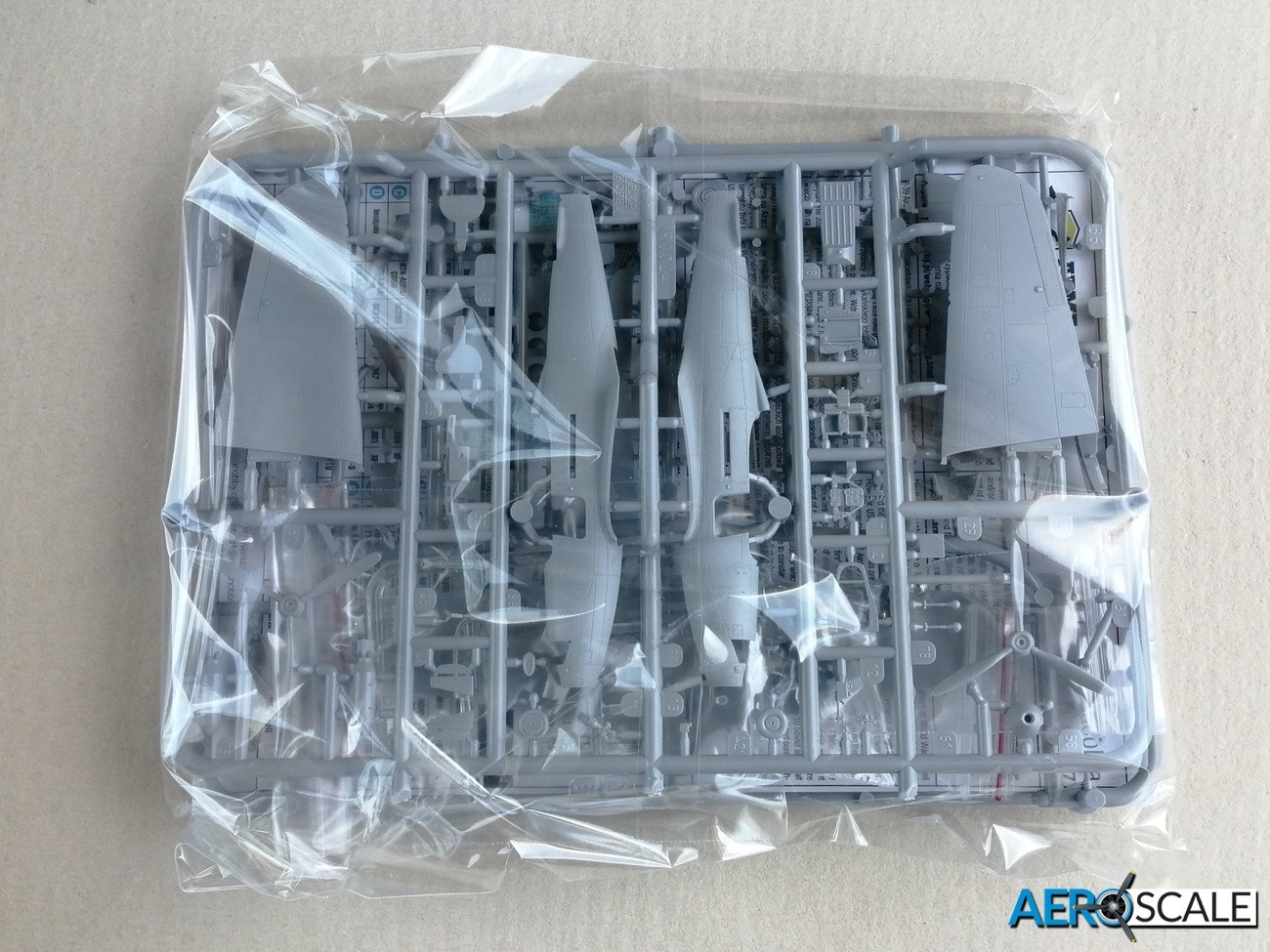
The P-400 depicted in this release is an export model of the P-39 sold to the French and UK. It was equipped with a smaller bore 20 mm Hispano cannon rather than the standard 37 mm cannon. It also had two 0.50 calibre machine guns in the nose, and two 0.30 calibre machine guns in each wing. Other features that distinguished the P-400 from the P-39 were the twelve exhaust tubes on each side of the engine. In RAF service the P-400 was named Airacobra I. Due to the lack of a supercharger there was insufficient power to operate effectively in combat, so the British quickly withdrew the type from service. The US government requisitioned many of the machines produced for the RAF, retaining the non-standard equipment and even British camouflage and serial numbers. The planes were named P-400 and were quickly sent to the South Pacific. The UK were taken over by the USAAF and used in combat in North Africa. Many P-400s went to the eastern front and flown by the USSR.


The Kit
Arma Hobby’s 1:72 scale P-400 is the fourth release of the P-39 family. Arma Hobby's first P-39 was first released as a new tool in 2022. This edition comes in a side opening box and contains:
- 2 x grey plastic sprues
- 1 x clear plastic sprue
- 3 x steel ball bearings [nose weight]
- 1 x sheet of decals
- 1 x sheets of kabuki paint masks
- Instruction manual
Everything is packed into a single bag for security with the clear plastic sprue and ball bearings packed within their own bags. The decals and masks are placed inside the instructions. The surface of the plastic is a myriad of excellent consistent recessed and raised detail including panel lines and fasteners. There are locating pins and holes to help with alignment of the main parts. Parts are beautifully moulded and in scale, though some of the parts look very delicate. So, some care will be need removing them from the sprues.

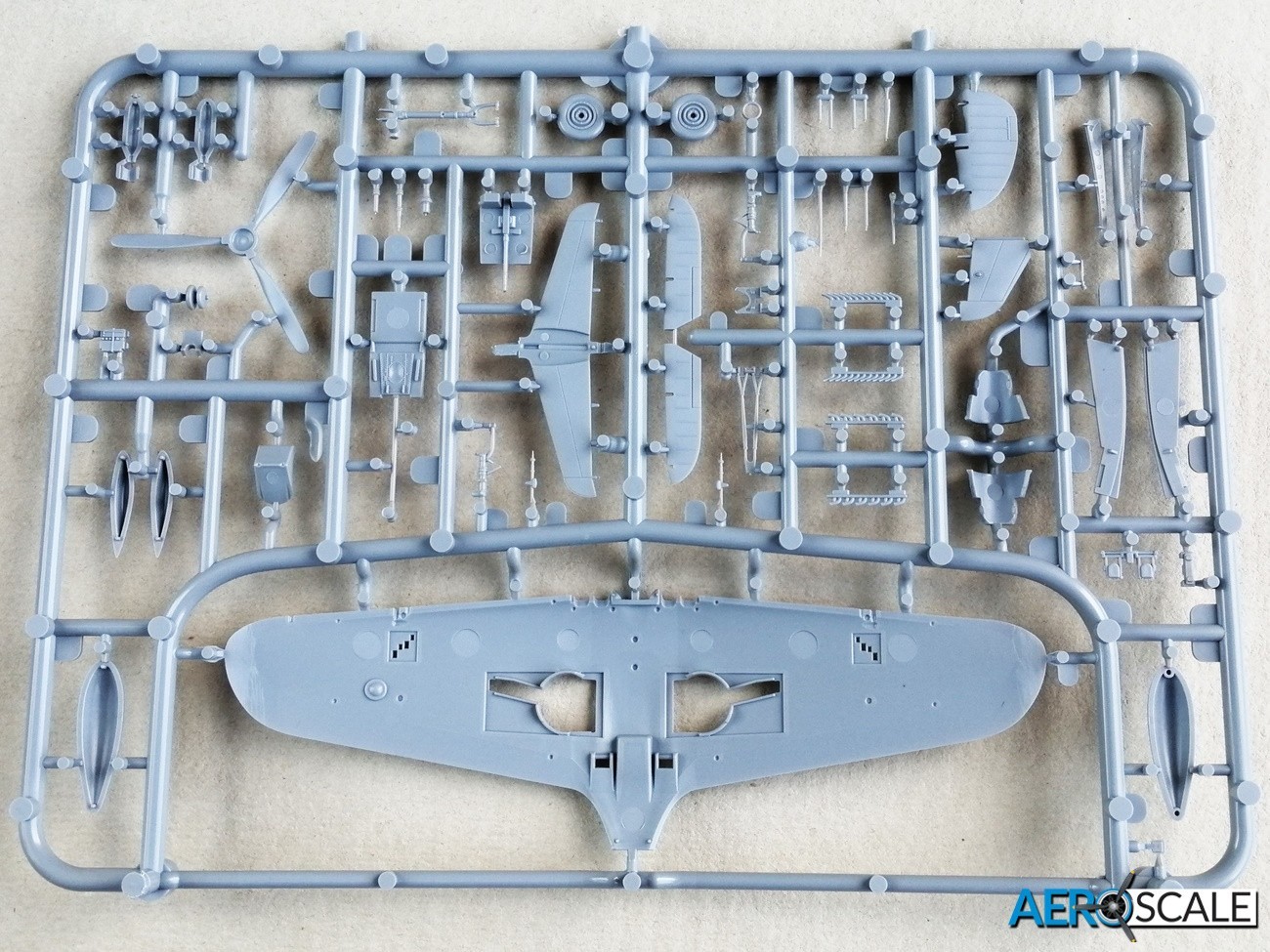
Thirteen plastic parts make up the detailed office. The inside surfaces of the fuselage have fine raised detail in the cockpit area. The instrument panel [IP] and central console has sharp detail. Three small decals provide detail for the instrument faces on the IP. The prop shaft is incorporated with the cockpit floor. Part of the cockpit floor forms a section of the roof of the forward undercarriage bay. The seat is attached to a nicely detailed frame. The seat harnesses are to be found on the decal sheet. The decking to the rear of the pilot and covering the engine is nicely detailed.
The canopy and windscreen are one piece with separate car style doors. The doors can be displayed open and there is some excellent detail on the inside of each door.
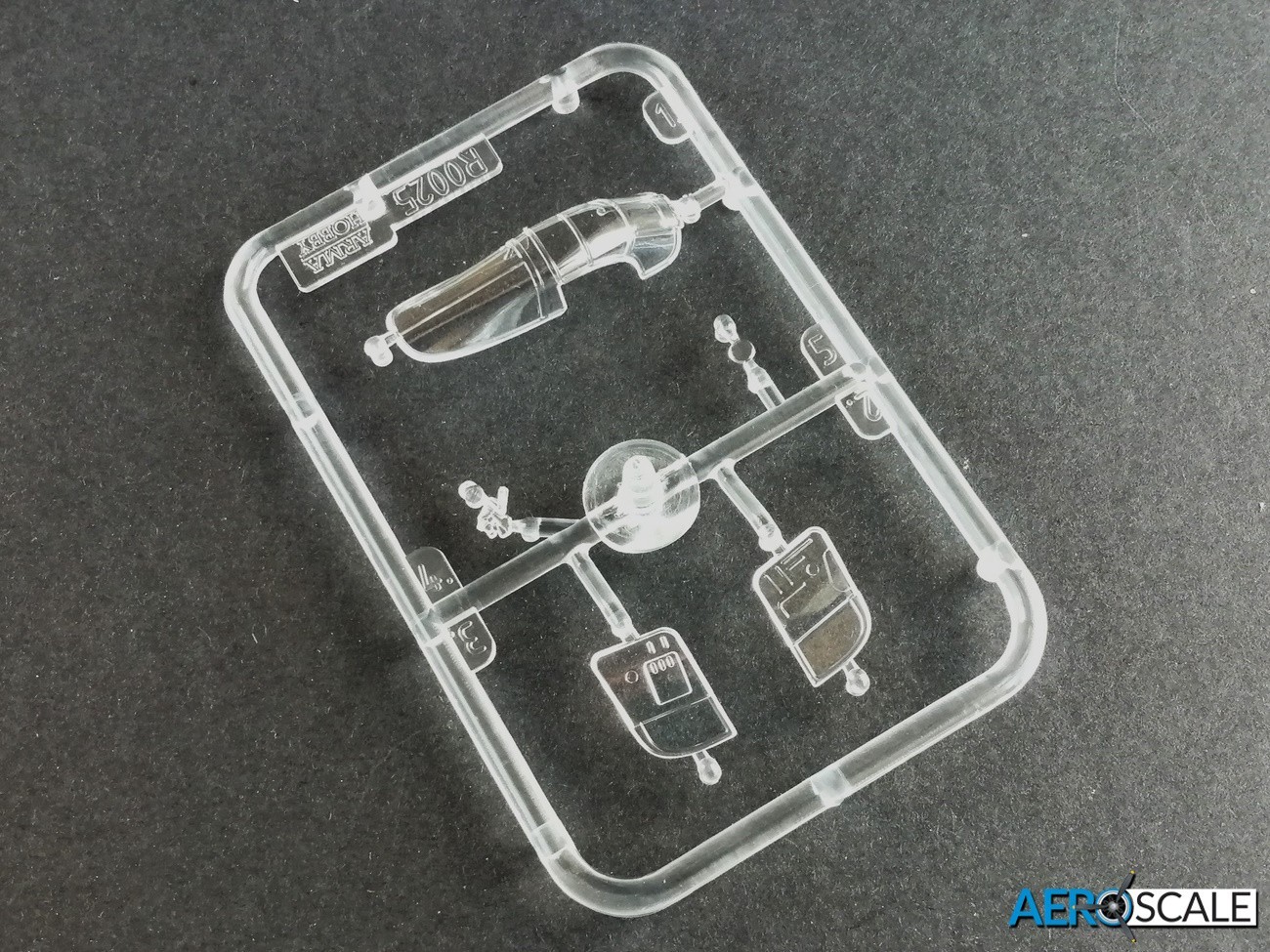
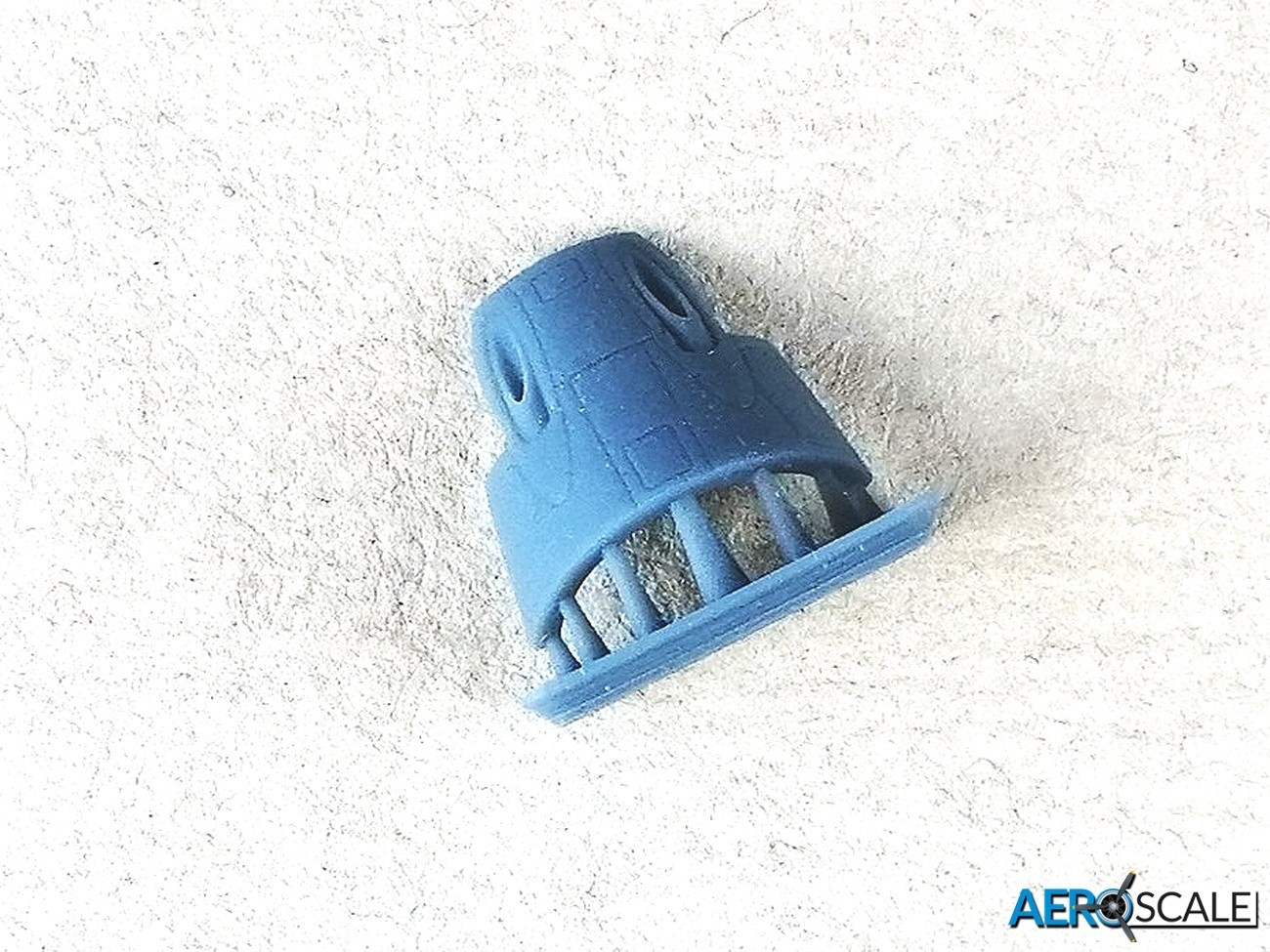
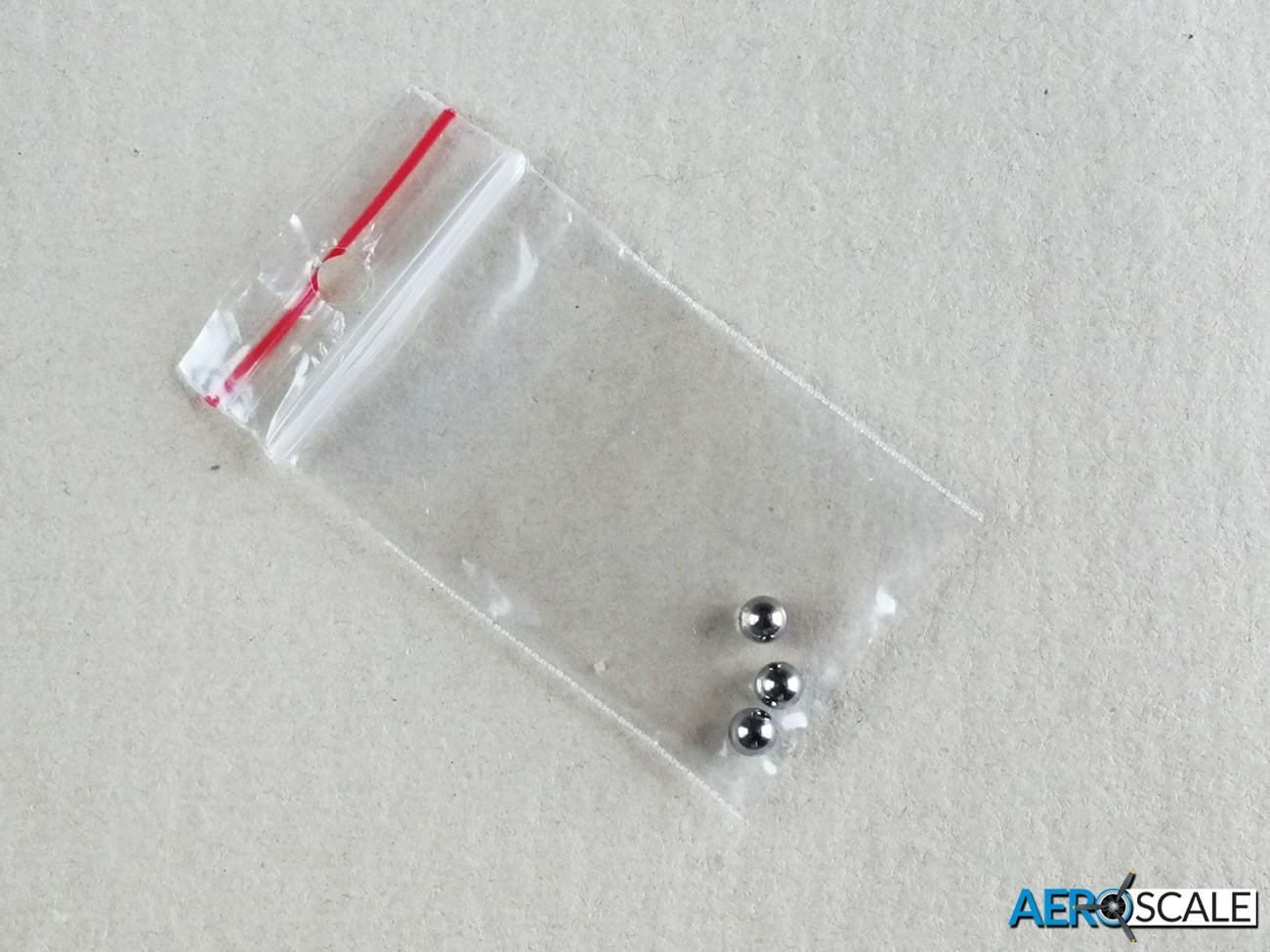
The fuselage is split vertically with separate vertical fin and separate rudder. There are two different styles of exhaust Included though only the twelve nozzle is used. The one-piece prop has a separate spinner and into the spinner goes the protruding 20mm canon barrel. Most of the recessed engine bay access panels on the nose needs filling and the bulges on the belly and the two nose vents need filing down. The 3D part representing the fairing of the two nose mounted machine guns needs to be added.
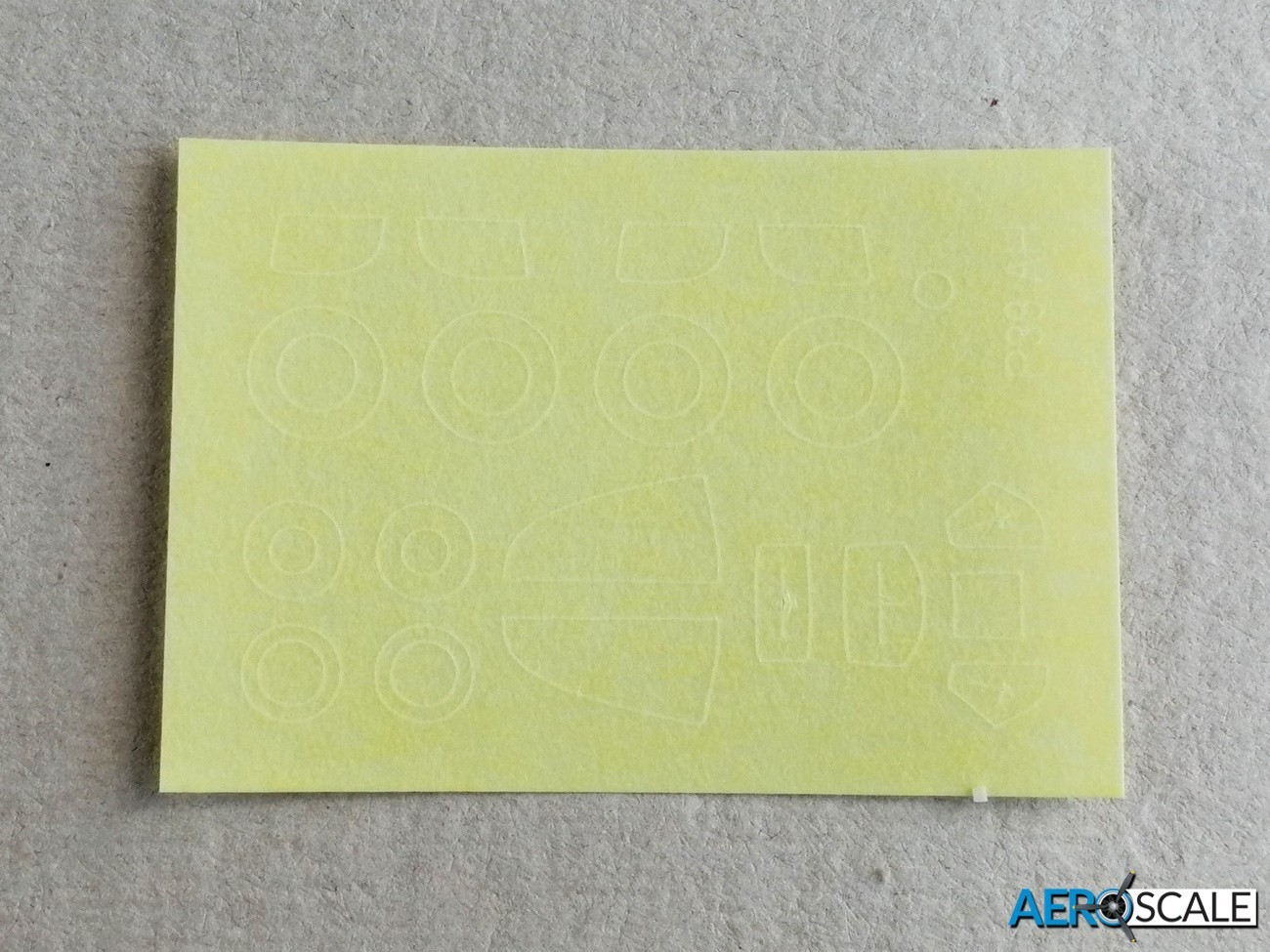

The three-piece main wing has a one piece lower wing, with the control surfaces and flaps moulded in the neutral position. The three vent flaps under the belly for the coolant and oil radiators are separate and can be displayed open or closed. A nice touch is the ribbed detail moulded into the roof of the undercarriage bay. Thankfully there is no sign of shrinkage visible on the upper half of the wing caused by the ribbed detail. The lower wing needs holes drilling to fit the belly fuel tank/bomb rack. The ID lights under the right-wing tip needs to be filled. The wing mounted machine guns are fitted before the wings are assembled.


The tricycle undercarriage is a distinctive feature of the Airacobra and Arma Hobby has done a superb job portraying it. The detail on the parts making up the undercarriage is superb. Particularly noteworthy is the detail in the wing, on the inside of the undercarriage doors and the separate walls of the forward undercarriage bay. The latter are attached to the cockpit floor. The part forming the roof of the nose undercarriage bay has three recesses for the ball bearings counter weights. The oleos of the main undercarriage display enough compression so that the sit of the model along with the weighted one-piece wheels should look good. The tyre manufacturer Firestone features on the sidewall in low relief. Both forward and main undercarriage units can be left off until painting is completed.
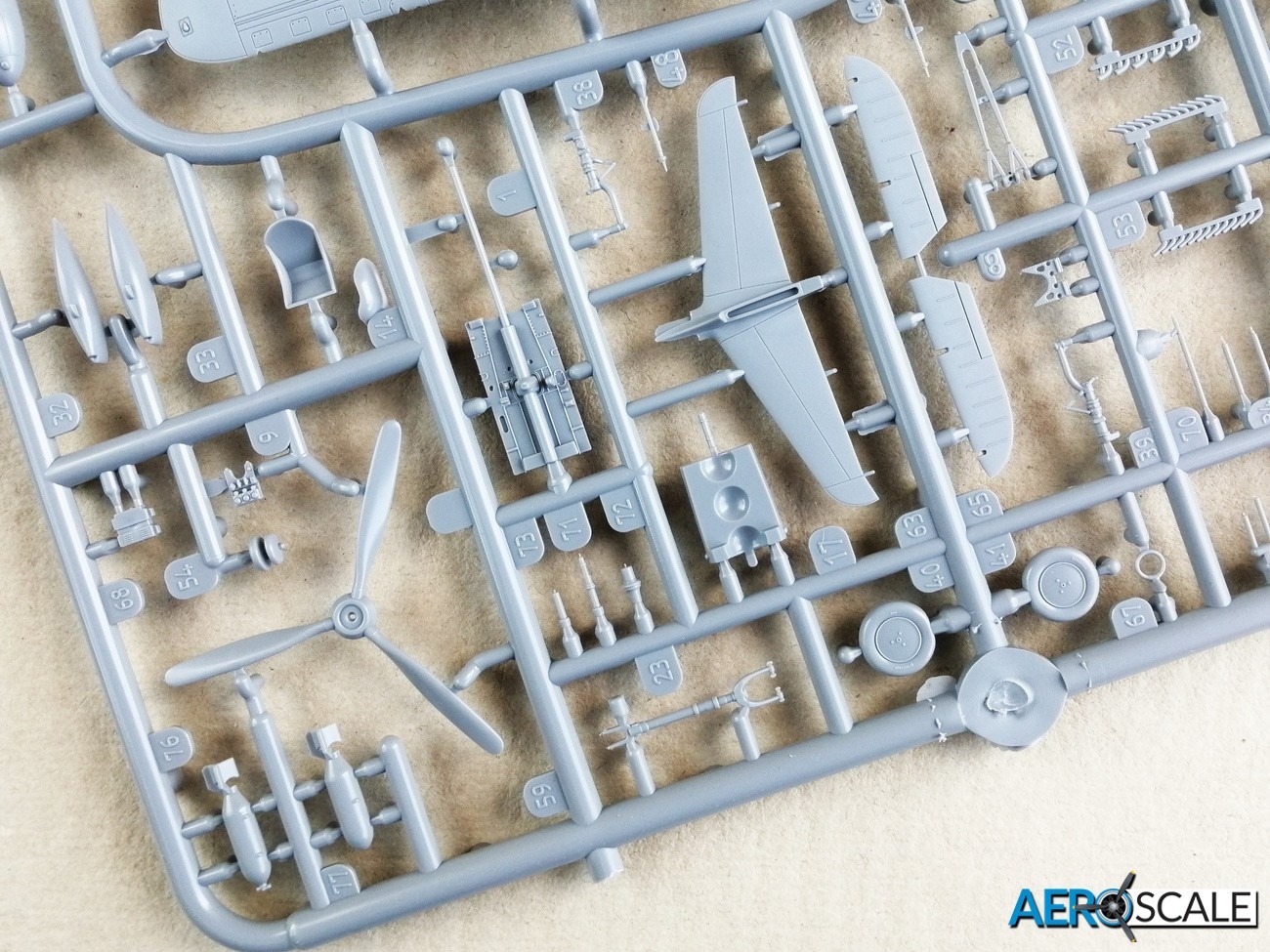
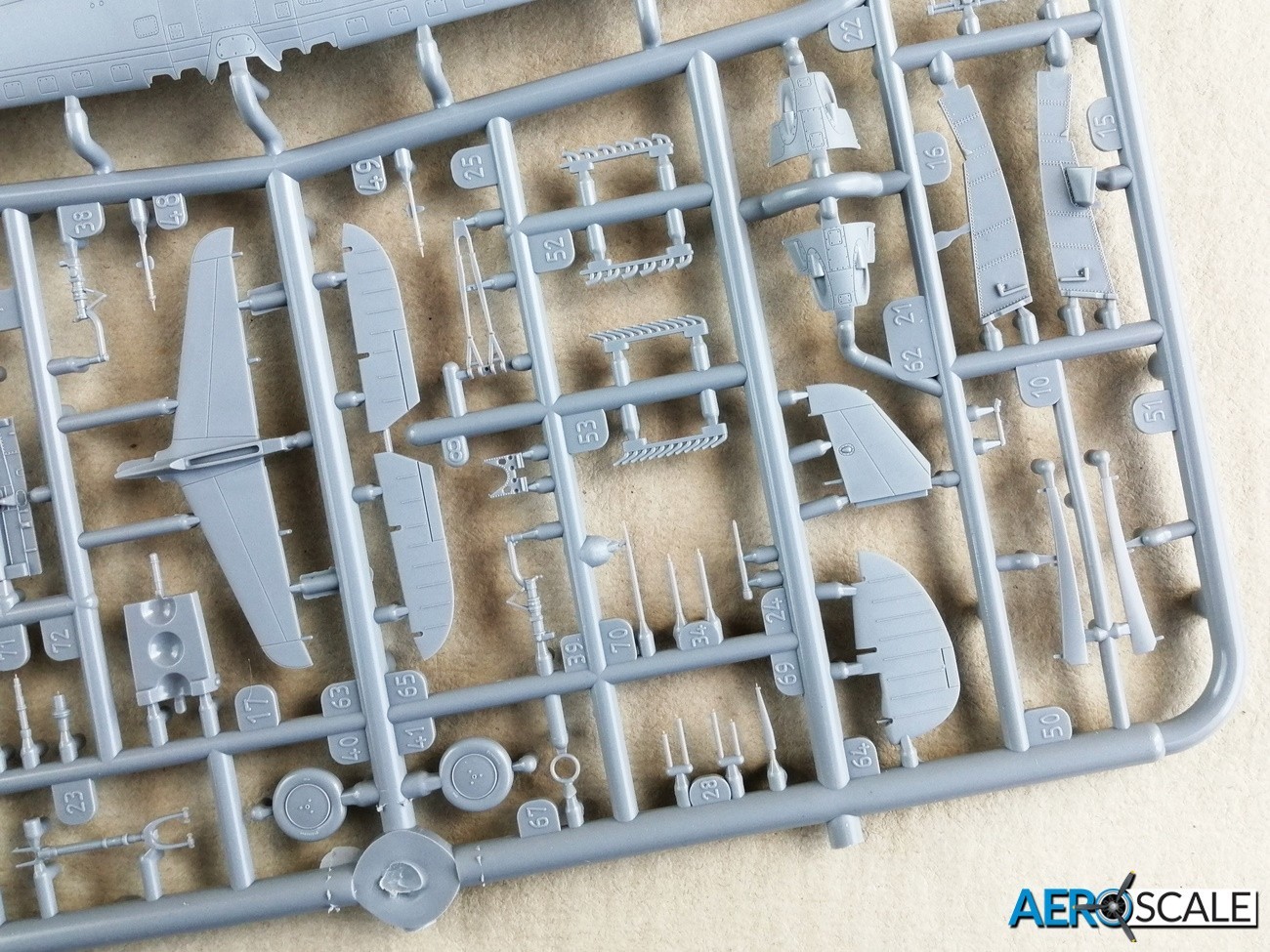
Included are a 250lb and 500lb bombs as well as the almost permanently fitted fuel tank. These are fitted in the belly position. As mentioned, holes need to be created to fit the cradle.
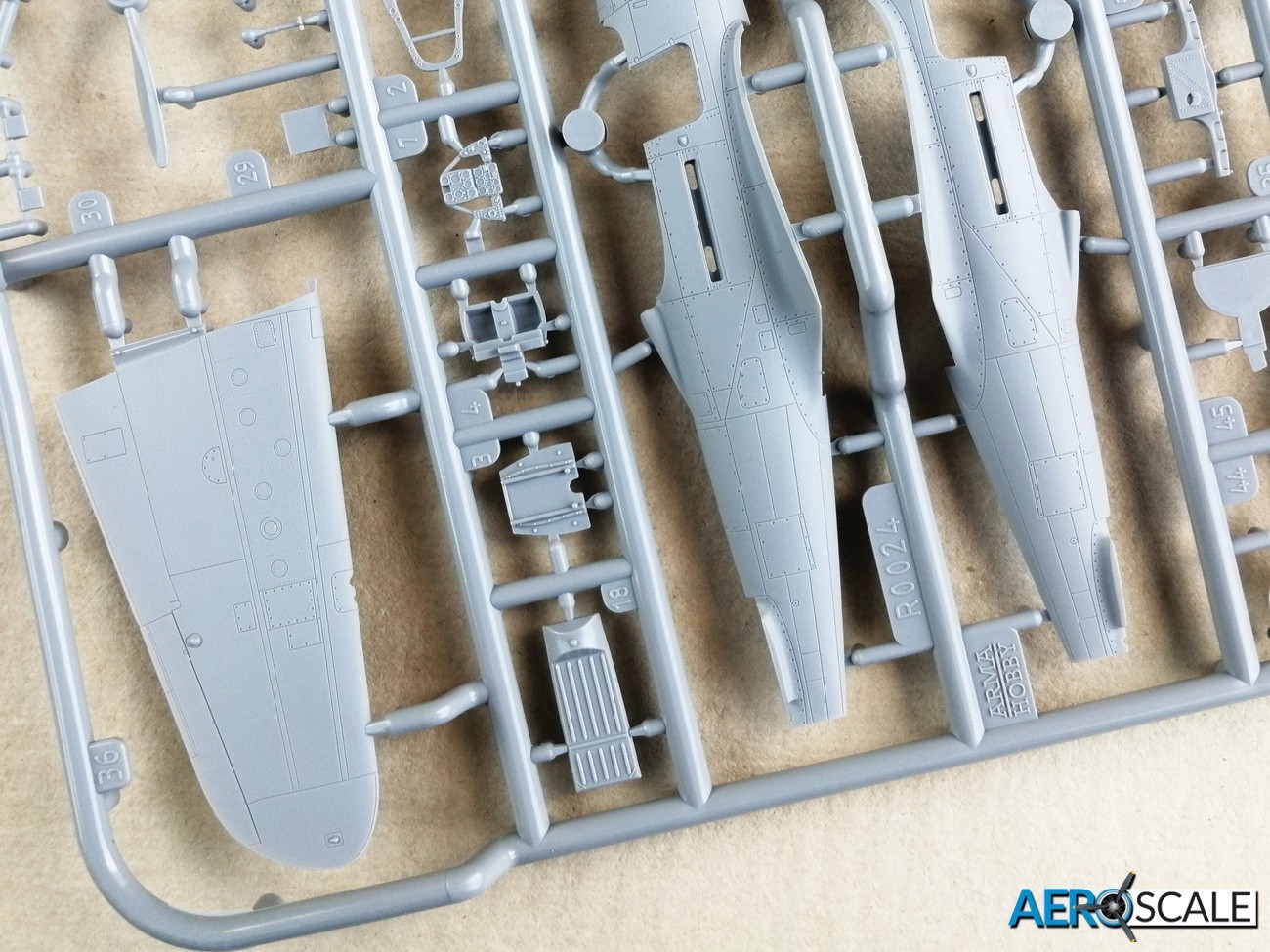

The kabuki paint masks are for the windscreen, canopy, both sides of the doors, wheels and I think the landing light. Arma Hobby do not provide any guidance for positioning the masks, though it’s not exactly rocket science to work out where they are placed.
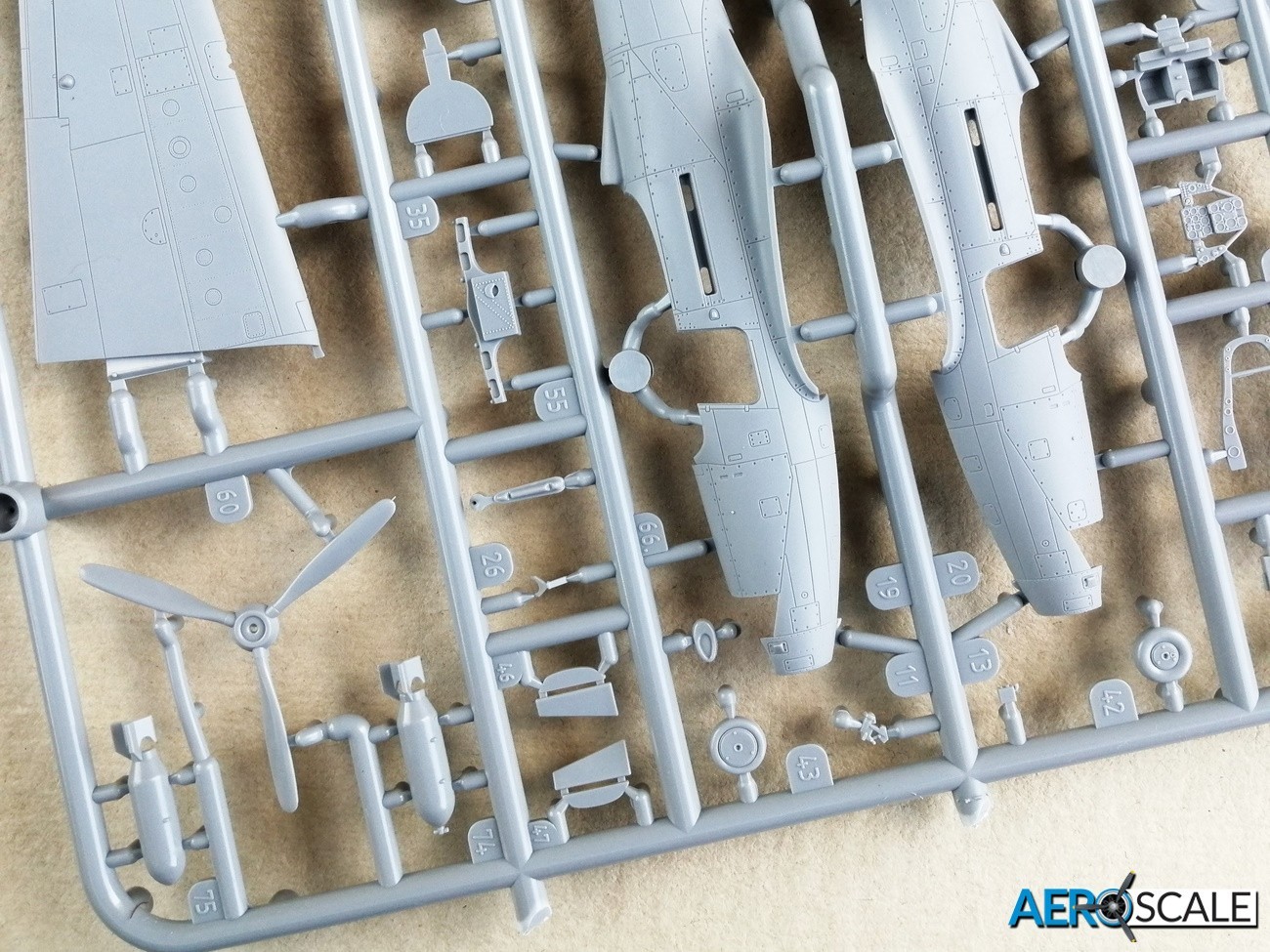
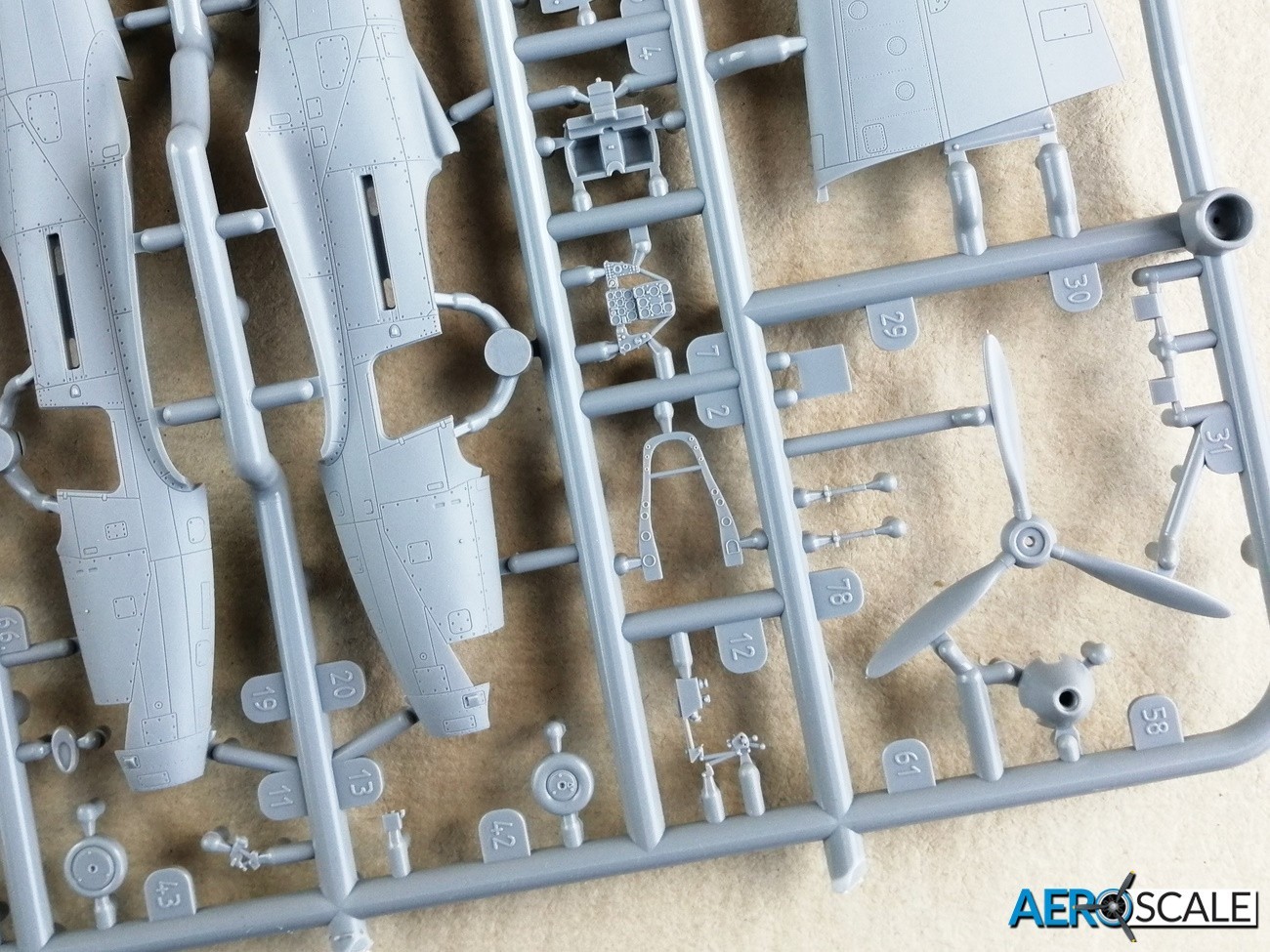
The decals are produced by Techmod and includes the various insignia and markings, seat harness, cockpit instruments, placards, art work and wing walkways. The definition, registration and colour density of the decals is top class. The glossy carrier film is kept to a minimum. There are quite a few stencils to add and there is a dedicated section to their application in the instructions.
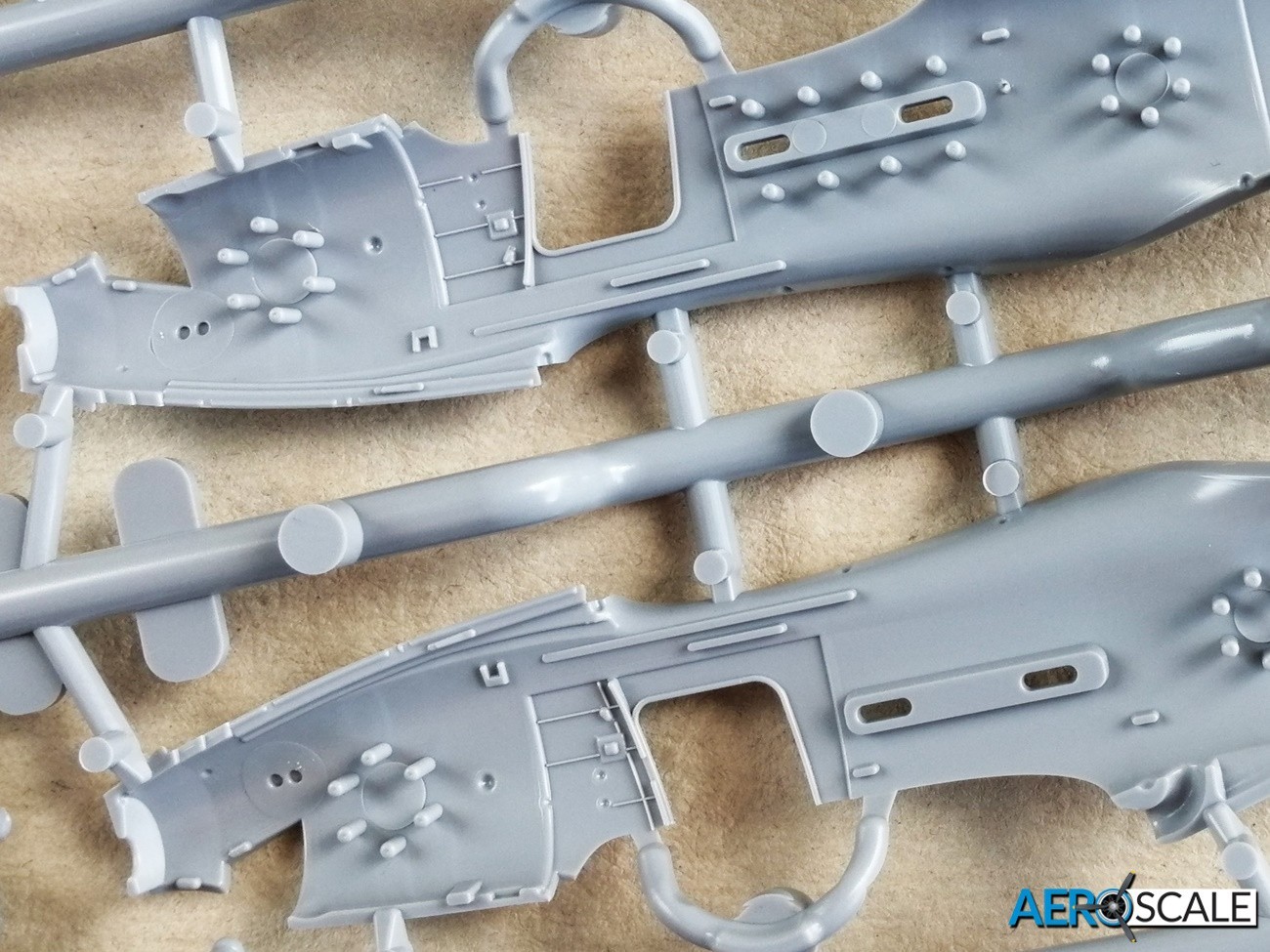
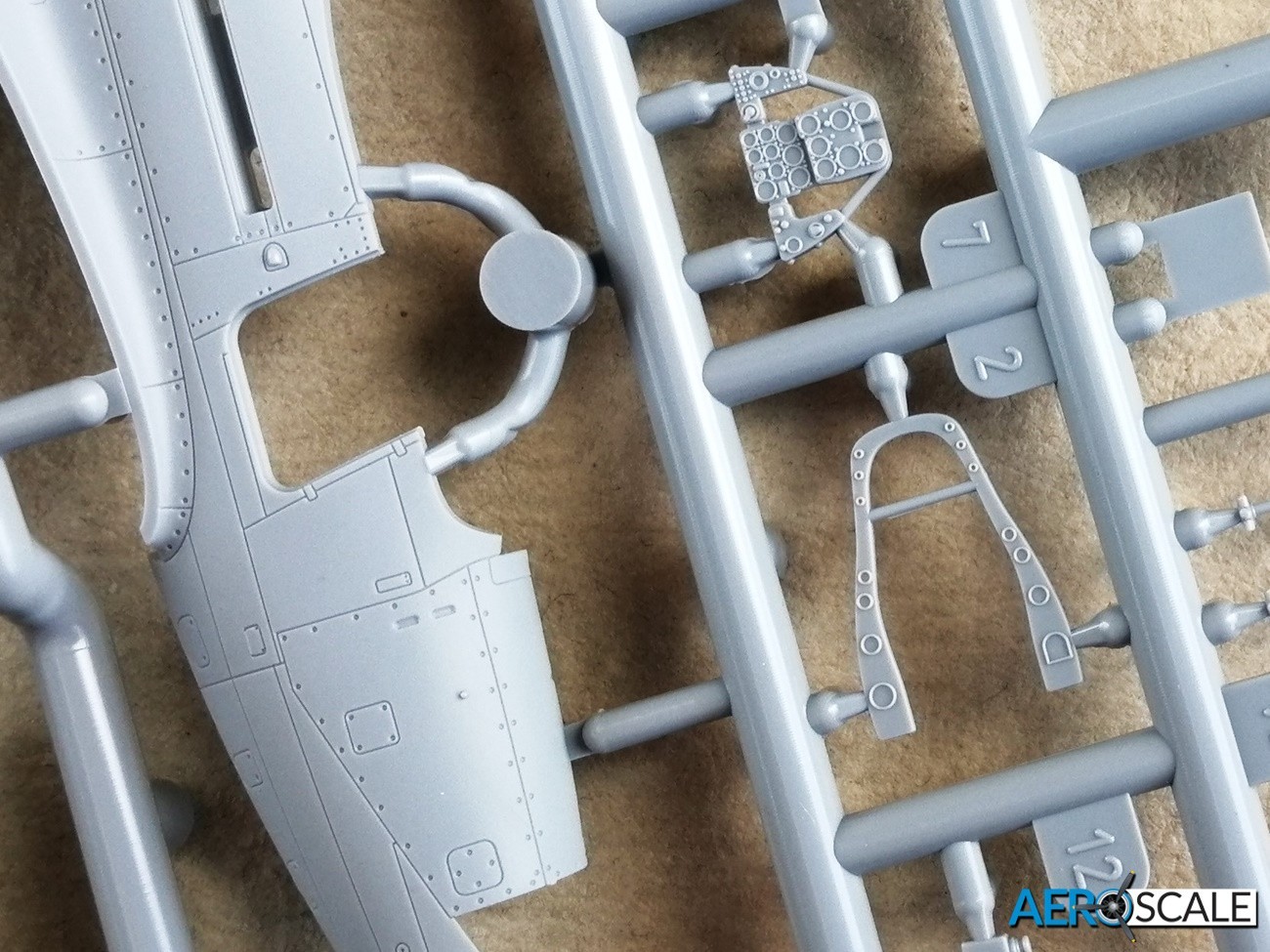
The twelve-page A5 format instructions seems to be pretty clear. Construction instructions are colour coded and a useful aid in construction are the multiple view diagrams. The painting guide is in colour with four profile views of each subject. The stencil guide also has four profile view of the airframe too. There are several paint manufactures referenced in the instructions including: Hataka, AK RC, Lifecolor, Ammo, Humbrol, Vallejo and Tamiya.

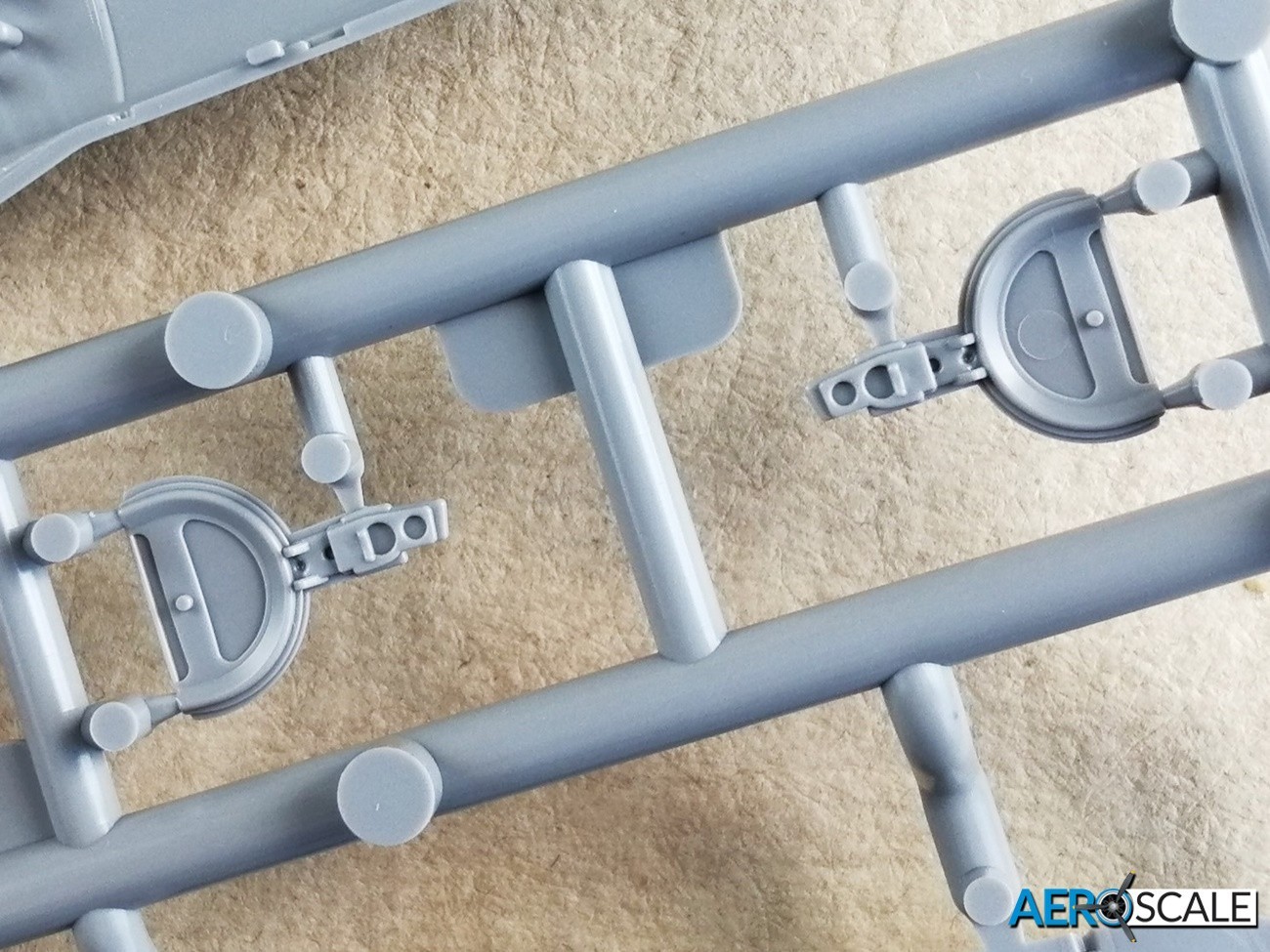
Markings options feature three Airacobras's from the Cactus Air Force and include:
- P-400 Airacobra white 13, ‘Wahl Eye’, 39FS/35FG, pilot Lt. Eugene A. Wahl, Port Moresby, New Guinea, Summer 1942
- P-400 Airacobra white 19, AH736, 80FS/8FG, Turnbull Airstrip, Milne Bay 1942
- P-400 Airacobra white 13, ‘Hells Bell’, BW151, 67FS/347FG, pilot Lt. Robert M. Ferguson, Guadalcanal, August-November 1942
Camouflage is predominantly dark green and dark earth upper surfaces and Sky type ‘S’ under surfaces. Arma Hobby’s selection of marking options is far from boring. All three feature shark mouths and options one and three feature nose or fuselage artwork



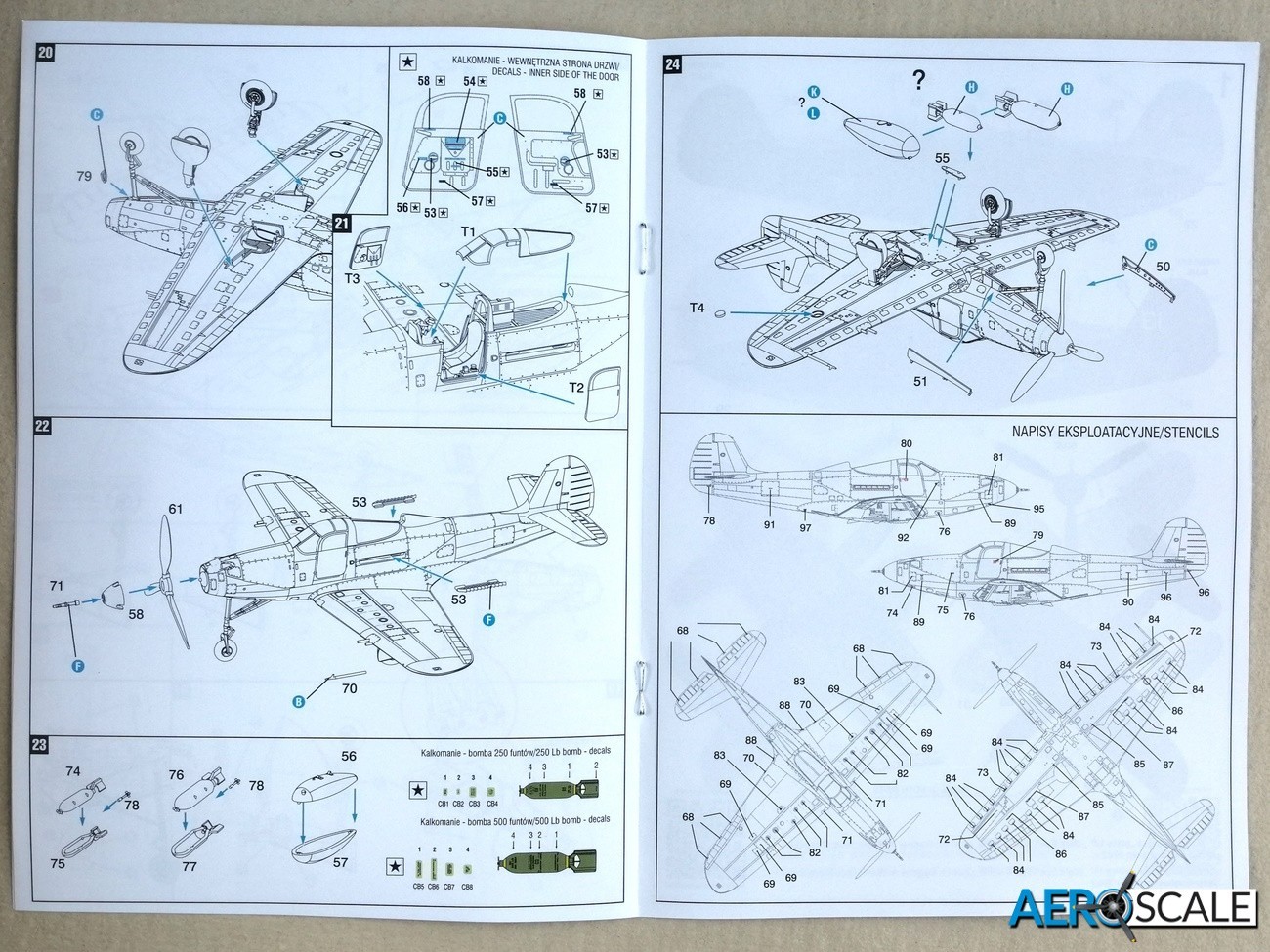
Conclusions
This is a great addition to the series of P-39’s Arma Hobby has released recently and looks like another superb release from Arma Hobby. They have maintained the high standards of detail and quality we are now coming to accept.
Price: €26.50
Many thanks to Arma Hobby for supplying this kit for review. The 1:72 scale kit is available from Arma Hobby costing €26.50
70057 - P-400 Airacobra – 1:72
Please remember, when contacting retailers or manufacturers, to mention that you saw their products highlighted here – on Aeroscale.
